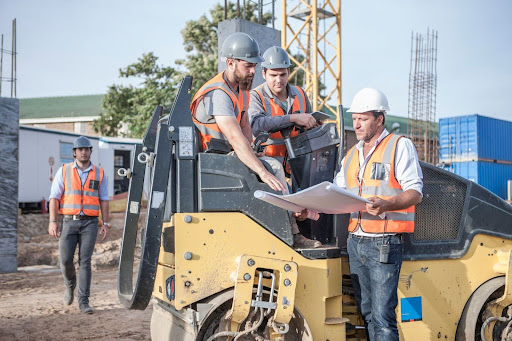For many small businesses, the ability to keep up with modern tools, machinery, and technology can determine long-term success. Yet the price of acquiring essential business equipment often creates a barrier. High cash outlay for a single equipment purchase can limit growth opportunities, strain cash flow, and slow down expansion.
That’s where choosing to finance business equipment makes a real difference. With equipment financing, companies can spread out payments over time, allowing them to access the right equipment without draining their reserves. This approach doesn’t just help stabilize operations—it gives businesses the flexibility to invest in other areas, like staffing, marketing, or expanding service lines.
Instead of waiting until they have enough capital to buy outright, businesses can leverage financing to obtain the tools they need today. From office furniture and IT systems to heavy machinery and construction equipment, business loans and equipment loans provide pathways to stay competitive while preserving financial stability.
Ultimately, financing allows businesses to stay agile—balancing their business needs with smart financial planning and sustainable growth.
Improved Cash Flow Through Equipment Financing
One of the greatest advantages of equipment financing is its ability to protect a company’s cash flow. Instead of tying up capital in a single equipment purchase, businesses can distribute the equipment’s cost into manageable monthly payments. This structure reduces the strain of large upfront costs, making it easier to keep business operations stable and predictable.
For small businesses, this is especially critical. Maintaining steady working capital means you can still cover payroll, marketing, and other core expenses while adding the business equipment needed to grow. In many cases, business equipment loans also offer flexible terms, helping companies align repayment schedules with seasonal or industry-specific revenue cycles.
Even better, financing equipment through a trusted financing provider often results in lower monthly payments compared to alternatives like using credit cards or draining reserves. This frees up resources to reinvest in growth, allowing businesses to respond to opportunities without worrying about running short on cash.
Ultimately, healthy cash flow is the lifeblood of any business. By choosing the right financing, you gain the funds you need for equipment needs today without jeopardizing your ability to operate tomorrow.
Lower Upfront Costs and Flexible Equipment Leasing

One of the clearest advantages of financing is avoiding the burden of large upfront costs. Buying business equipment or industrial equipment outright can drain reserves quickly, leaving companies without the working capital they need for day-to-day operations. By contrast, equipment leasing and loan structures reduce the initial cash outlay, giving businesses access to the right equipment without a heavy hit to their budget.
With leasing equipment, businesses often face little to no down payment, which makes it easier for small businesses to upgrade sooner rather than waiting until funds accumulate. Leasing also typically comes with predictable monthly payments and payment plans, which help stabilize budgeting.
Key Benefits of Equipment Leasing
- Minimal upfront cost – Often no or low down payment required.
- Predictable expenses – Fixed monthly payments simplify budgeting.
- Flexibility – At the end of the loan or lease term, companies can:
- Purchase the new equipment outright.
- Renew or extend the lease.
- Upgrade to newer models.
- Access to modern tools – Especially helpful in industries like IT systems or professional services, where technology changes rapidly.
Tax Benefits and Financial Advantages of Business Equipment
Beyond preserving working capital and easing cash flow, equipment financing can also create valuable tax advantages. For many small businesses, these benefits can make the difference between barely breaking even and achieving healthy growth.
Tax Benefits
- Deductible payments – Depending on the structure, both equipment loan interest and equipment leasing payments may qualify as deductible business expenses.
- Section 179 deduction – Businesses may be able to deduct the full equipment purchase price in the year it was acquired, even if it’s financed rather than bought outright.
- Depreciation benefits – Financing still allows you to claim depreciation over time on certain types of business equipment, which lowers taxable income.
Financial Advantages
- Preserves capital – Instead of exhausting resources on one equipment purchase, financing helps spread payments across a manageable loan term.
- Lower monthly payments – Some structures allow for lower monthly payments, which keep your business operations running without strain.
- Flexible structures – A trusted financing provider can tailor financing solutions to your business needs, whether that means longer terms, seasonal repayment schedules, or balloon payments.
Minimizing Down Payment Barriers for Small Businesses

One challenge that keeps many small businesses from upgrading or acquiring equipment is the required down payment. For some lenders, this can range from 10% to 20% of the equipment’s cost, creating a hurdle for companies that already struggle with cash flow or limited reserves of capital.
How Financing Helps
- Reduced upfront requirements – Many financing providers and loan programs offer solutions with lower or even no down payment requirements.
- Flexible payment structures – By spreading costs into monthly payments, businesses avoid tying up funds in a single purchase.
- Preservation of working capital – Financing ensures you can continue to invest in marketing, staffing, and other business operations while still securing the right equipment.
Options for Small Businesses
- Business equipment loans – These loans often allow companies to negotiate lower initial costs, especially when backed by the SBA.
- Equipment leasing – For businesses with tighter budgets or uncertain credit approval, leasing equipment can eliminate large upfront payments entirely.
By minimizing down payment barriers, financing opens the door for more small businesses to stay competitive, upgrade tools, and secure the funds needed for long-term growth.
Building Long-Term Value with an Equipment Loan
When a company invests in durable assets like machinery, construction equipment, or industrial equipment, it often makes sense to choose an equipment loan over a lease. Unlike leasing, where you return the asset at the end of the term, a loan allows you to build equity by eventually owning the equipment outright.
Advantages of Equipment Loans
- Ownership – Once the balance is paid, the asset becomes yours, adding to your list of long-term business assets.
- Stable loan terms – Many lenders offer fixed interest rates, predictable monthly payments, and structured repayment schedules that make financial planning easier.
- Financing equipment that holds value – Items like heavy machinery, commercial vehicles, and office upgrades retain utility well beyond the loan term, making them strong candidates for ownership.
Financial Impact
Owning equipment enhances your company’s balance sheet and can be leveraged as collateral in future business loans. It also reduces recurring costs compared to renewing equipment leasing contracts year after year. While an equipment loan may require a larger down payment, it typically results in lower total fees over the lifetime of the financing.
For small businesses that want to establish long-term stability, an equipment loan provides both financial value and operational reliability. It’s not just about gaining access to the right equipment—it’s about creating an asset base that supports growth for years to come.
Why Construction Equipment Shows the Power of Financing

Few industries demonstrate the value of financing better than the construction industry. The heavy machinery, construction equipment, and specialized tools required to complete projects often carry price tags that make outright purchases unrealistic for many small businesses. Choosing to finance equipment through an equipment loan or equipment leasing arrangement allows contractors and builders to stay competitive without jeopardizing cash flow.
Real-World Benefits
- Quick funding – Financing helps companies secure funds for essential machinery faster than saving up for an equipment purchase. This ensures projects stay on schedule and deadlines are met.
- Flexible options – From business equipment loans to leasing equipment, contractors can align financing with project timelines, seasonal demand, or client needs.
- Improved credit approval odds – Because the equipment’s cost often secures the loan, lenders may view construction equipment financing as lower-risk compared to unsecured business loans.
Long-Term Advantages
Investing in new equipment through financing also helps improve safety standards, reduce downtime, and ensure workers have the right equipment to complete jobs efficiently. Ownership through an equipment loan builds long-term value, while leasing provides flexibility for upgrading quickly when technology advances or when business needs shift.
Ultimately, financing empowers construction firms to expand their business operations, bid on larger projects, and maintain a reputation for reliability. Without this access to capital, many companies would struggle to keep up in such a fast-moving, equipment-intensive industry.
Cash Flow and Growth: Keeping Business Running Smoothly
At the heart of every financing decision is one question: how will this affect cash flow? For small businesses, maintaining healthy business cash flow is critical to keeping business operations stable. The right financing approach ensures you can pay employees, cover overhead, and still invest in the equipment needs that drive growth.
How Financing Supports Cash Flow
- Predictable monthly payments – With structured payment plans, companies avoid disruptive spikes in expenses.
- Preserved working capital – Rather than using funds for a large upfront equipment purchase, financing spreads the cost, freeing resources for payroll, marketing, or expansion.
- Flexible terms from many lenders – Most lenders understand that businesses face ups and downs. Seasonal schedules, balloon payments, or lower monthly payments can be negotiated to match revenue cycles.
Growth Opportunities
By choosing to finance equipment, businesses can act on opportunities faster. Whether it’s adding new equipment to expand services, upgrading outdated machinery, or investing in technology like IT systems, financing allows companies to grow without delay.
With the help of the right financing provider, businesses can stabilize cash flow, meet their business needs, and keep the company positioned for long-term success. In short, financing isn’t just about buying tools—it’s about ensuring your business has the flexibility to thrive in any environment.
Making Smart Decisions with an Equipment Purchase

While financing makes it easier to acquire assets, it’s still important to carefully evaluate every equipment purchase. Not every item is worth financing, and not every loan structure makes sense for long-term growth. The goal is to choose financing that strengthens your company, supports your business needs, and keeps your business running smoothly.
Factors to Consider Before Purchasing
- Determine value – Ask how the right equipment will impact productivity, safety, or profitability.
- Assess loan or lease structures – A loan or lease should align with your financial goals and the expected lifespan of the equipment.
- Understand fees and terms – Hidden fees, a mismatched loan term, or unexpected costs can make financing less effective.
Why Smart Planning Matters
By evaluating your equipment needs up front, you can avoid overspending or financing assets that don’t provide a return on investment.
Working with a trusted financing provider can also help you compare financing solutions from many lenders. This ensures your credit approval is structured in a way that fits your budget, avoids unnecessary risk, and provides the funds to invest in tools that actually drive growth.
Acquiring Equipment at the Right Time for Your Business
Timing plays a critical role when it comes to acquiring equipment. For many small businesses, the decision to invest is often delayed until machinery breaks down or processes are no longer efficient. Unfortunately, waiting too long can create bottlenecks in business operations, lead to costly downtime, and make it harder to secure favorable credit approval.
Why Timing Matters
- Avoid disruptions – Planning ahead ensures your company isn’t forced into emergency financing with higher fees or stricter terms.
- Take advantage of quick funding – Many financing providers offer fast approvals or the ability to apply online, so preparing early puts you in a stronger position when opportunities arise.
- Lock in favorable interest rates – Applying for an equipment loan when markets are stable helps avoid higher interest rates in uncertain conditions.
Balancing Needs and Resources
When evaluating the timing of an equipment purchase, consider both your business needs and financial outlook. If new professional services technology, IT systems, or office furniture will improve productivity, financing may help you get it sooner while maintaining healthy cash flow. Similarly, for large assets like machinery or construction equipment, a proactive approach ensures you have the funds available without draining capital.
Ultimately, the best time to finance is before you’re desperate. By strategically planning your financing, you align the acquisition of the right equipment with both operational and financial readiness.
Benefits of Equipment for Employees and Operations

Financing doesn’t just benefit the bottom line—it directly impacts the people who use the equipment every day. When companies invest in new equipment through loans or leasing, the downstream effects often show up in improved safety, morale, and productivity.
Benefits for Employees
- Safer tools and machinery – Up-to-date machinery, construction equipment, and industrial equipment reduce accidents and create a more secure work environment.
- Higher efficiency – Access to the right equipment means employees spend less time troubleshooting outdated systems and more time adding value to the company.
- Improved morale – Workers are more motivated when they have reliable tools, a safe and enjoyable environment, and effecient systems in place.
Benefits for Operations
- Reduced downtime – Modern business equipment is less prone to breakdowns, keeping business operations on schedule.
- Higher output – Productivity rises when teams have access to the resources they need. This improves profitability while keeping clients satisfied.
- Retention and recruitment – Providing employees with quality resources helps attract and keep top talent, which directly supports long-term business needs.
When businesses choose to finance equipment, they’re not only investing in assets—they’re investing in people. By improving workplace conditions and operational efficiency, financing delivers benefits that extend far beyond the balance sheet.
How to Maximize These Benefits: Practical Steps
Financing isn’t just about gaining access to equipment—it’s about making sure the agreement delivers the most value for your company. By taking a few proactive steps, you can strengthen your application, improve terms, and ensure your financing supports long-term business needs.
1. Prepare Before You Apply
- Gather recent financial statements to demonstrate stability.
- Review your credit profile and address issues that could impact credit approval.
- Clearly outline your equipment needs—from professional services upgrades like IT systems to larger machinery or construction equipment.
2. Compare Options Carefully
- Look at both business equipment loans and equipment leasing to determine which better aligns with your goals.
- Compare interest rates, loan term lengths, and any additional fees.
- Ask about payment plans or seasonal adjustments that fit your business operations.
3. Choose the Right Partner
- Work with a trusted financing provider who can connect you with many lenders and offer tailored financing solutions.
- Ensure the provider explains terms clearly, including security interest requirements, ownership details, and potential tax advantages.
4. Plan for Long-Term Success
- Don’t just focus on immediate access to the funds—consider how monthly payments will affect cash flow in the future.
- Make sure the equipment will remain useful beyond the financing term to maximize the return on investment.
- Revisit your financing agreements periodically to determine if refinancing or upgrading is beneficial.
By following these steps, small businesses can maximize the full benefits of equipment financing, ensuring that the decision not only addresses today’s needs but also strengthens the company for tomorrow.
How Charter Capital Helps You Realize These Benefits

Choosing to finance or lease equipment is a big decision—and the success of that decision depends on working with the right financing provider. At Charter Capital, our role is to simplify the process, connect small businesses with trusted lenders, and create financing solutions that truly fit your business needs.
Why Work with a Broker Like Charter Capital?
Unlike traditional banks that offer limited loan programs, we leverage a broad network of many lenders. This means your company gets access to the most competitive interest rates, flexible terms, and customized structures. Whether you’re exploring an equipment loan, comparing equipment leasing options, or looking for the best way to handle a down payment, we provide clear guidance at every step.
Tailored Support for Your Business
- Customized financing – From business equipment loans to seasonal payment plans, we design options that align with your business operations.
- Transparency – We walk you through potential fees, terms, and monthly payments, so there are no surprises.
- End-to-end help – From preparing for credit approval to finalizing agreements, our experts help you secure funds quickly and confidently.
Long-Term Partnership
Our commitment doesn’t stop once you sign paperwork. We’re here to support your equipment needs over the long haul—whether that means refinancing, upgrading to new equipment, or advising on the benefits of equipment for your employees and operations.
With more than 40 years of experience, Charter Capital has helped thousands of businesses finance equipment efficiently, preserve working capital, and keep their business running smoothly. That’s the value of working with a trusted partner who understands both financing and the unique challenges businesses face.
Need Business Equipment Financing?
At Charter Capital, we make it simple to explore financing solutions tailored to your business needs. With decades of experience and access to many lenders, we connect you with the best financing provider for your situation—whether you’re planning your next equipment purchase, expanding into new markets, or looking for flexible ways to keep your company competitive.

